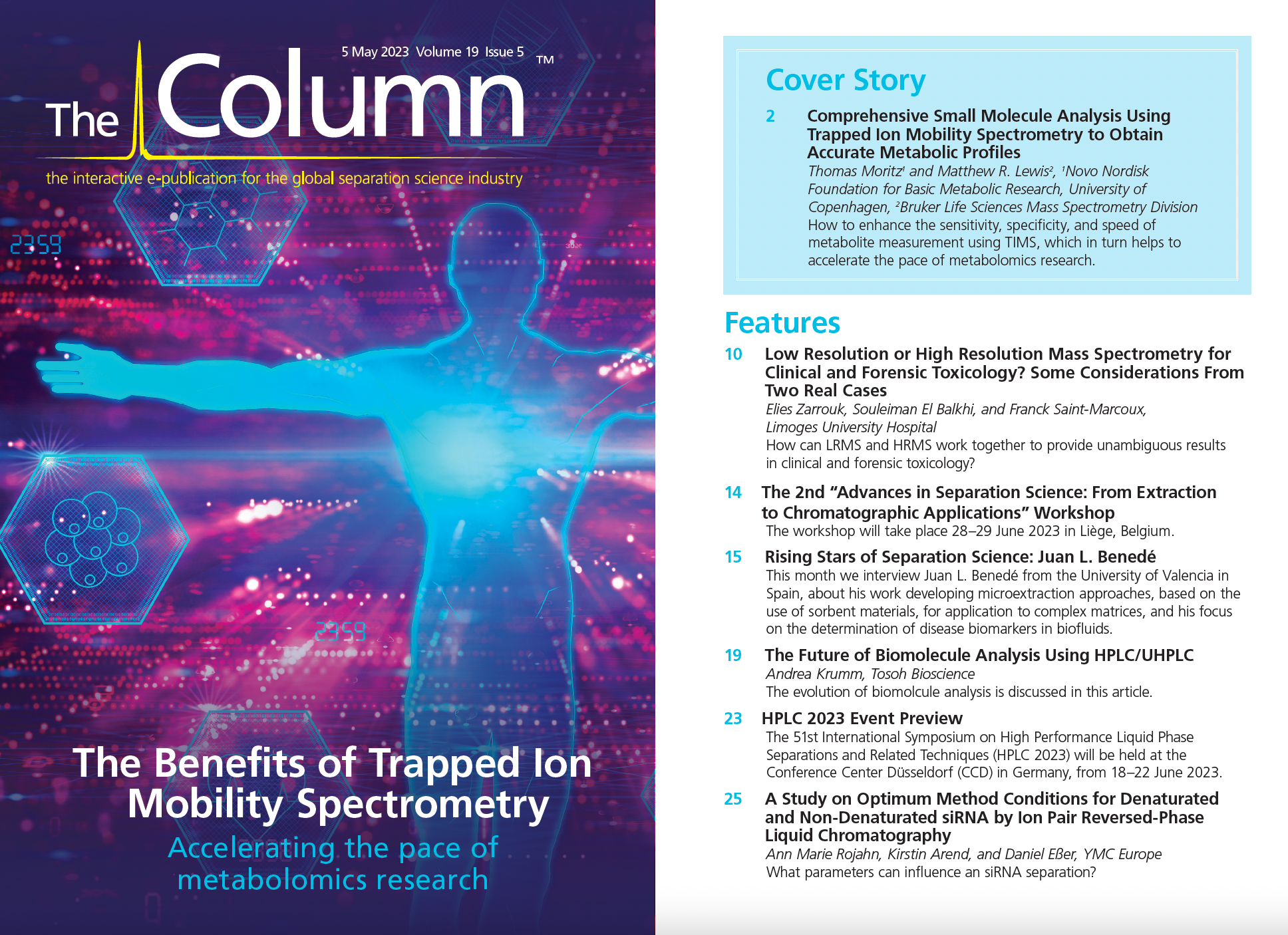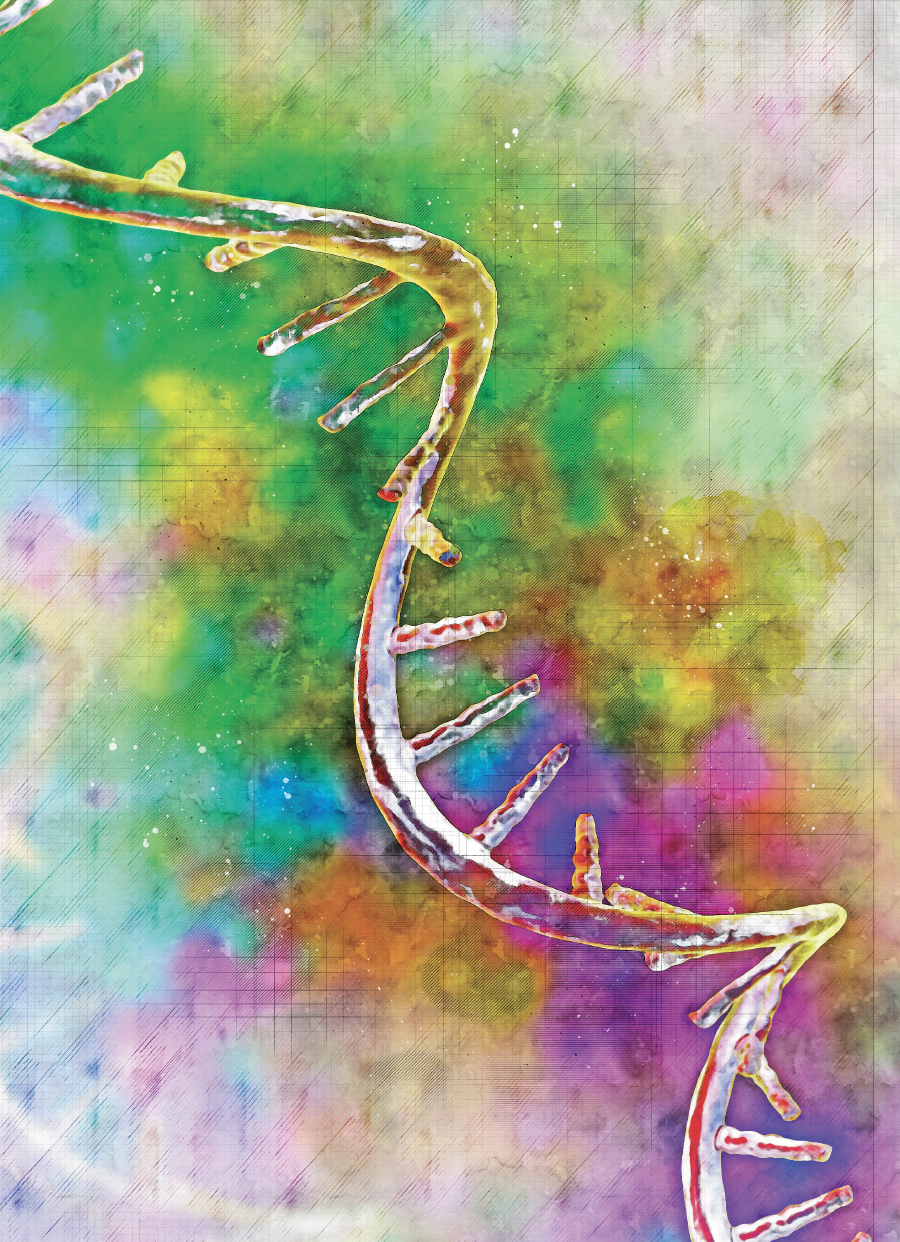Rising Stars of Separation Science: Juan L. Benedé
This month we interview Juan L. Benedé from the University of Valencia
in Spain, about his work developing microextraction approaches, based
on the use of sorbent materials, for application to complex matrices,
and his focus on the determination of disease biomarkers in biofluids.
Juan L. Benedé is a postdoctoral researcher in the Department of Analytical Chemistry of the University of Valencia, Spain, in the GICAPC research group, founded by Amparo Salvador and currently led by Alberto Chisvert. He obtained his Ph.D. in 2016 at the same university with an Extraordinary Award mention. His research mainly focuses on the development of new miniaturized approaches to be applied to the analysis of complex matrices, such as biological fluids and cosmetics. He is co-author of more than 45 scientific publications in peer-reviewed journals and has presented 40 communications in national and international conferences, with two of them awarded as best oral communications. He has carried out research stays at the University of Ioannina (Greece) and the University of Córdoba (Spain) during his predoctoral and postdoctoral stages, respectively. He is currently the communication manager of the EuChems-DAC Sample Preparation Study Group and Network.
Q. When did you first encounter chromatography and what attracted you to the subject?
A: My first contact with chromatography was in the third year of my degree, in the analytical chemistry laboratory. One of the laboratory sessions was focused on determining the caffeine content in a famous soft drink. Although it seems like an extremely simple application to me now, I was fascinated back then. Simply by diluting the soft drink with water and introducing it into a chromatograph, I was able to estimate the amount of caffeine I was ingesting each time I drank a soft drink. Furthermore, I fondly remember those laboratory sessions because they were taught by Amparo Salvador, who years later would be my thesis co-director, and who recently retired.
As for the first contact with research, it was during my master’s thesis, when I used gas chromatography coupled to mass spectrometry (GC–MS) to determine phthalates in perfumes. It was an even more interesting experience since it was not only about diluting and injecting according to a given protocol, but it was also necessary to previously optimize the conditions to separate the analytes, eliminate interferences, and reduce background noise.
Q. Can you tell us more about your Ph.D. thesis?
A: My Ph.D. thesis was focused on the development and validation of sensitive analytical strategies based on microextraction techniques. These novel approaches were applied, as proof-of-concept, to the determination of UV filters in environmental water samples. UV filters are a group of cosmetic ingredients used nowadays in many cosmetic products—beyond those exclusively designed for sun protection. These ingredients are considered as emerging contaminants because they have harmful effects on the aquatic environment, and thus their determination is of high interest.
The topic of my thesis was a starting point for my later research career. Since then, I have continued to develop new approaches, further improving the benefits that microextraction techniques provide, such as reducing the sample and solvent volumes or minimizing the waste, to be in line with the principles of green analytical chemistry and, more recently, green sample preparation.
Q. What chromatographic techniques have you worked with?
A: During my research career, I have worked with liquid chromatography with UV detection (LC–UV) or coupled to tandem mass spectrometry (LC–MS/ MS), GC–MS and, occasionally, GC with flame ionization detection (GC–FID). I would not change the possibilities provided by chromatography for any other analytical technique.
Q. Your current research focuses on the development of new microextraction approaches, based on the use of sorbent materials, for application to complex matrices—what specifically attracted you to this area of research?
A: Although during my predoctoral period I applied the approaches only to environmental samples, it is true that in the research group in which I work, led by Alberto Chisvert, we immediately perceived the great potential that these approaches present. For this reason, during my postdoctoral career, we have expanded the field of application to other more complex samples, such as cosmetics (a field of application in which my group has a recognized background) and biological samples. Their complexity requires a rigorous sample treatment, which motivated me to continue in this area.
I have worked with microextraction techniques in both liquid- and solid-phase. However, the latter offers enormous selectivity because it allows the use of a wide variety of sorbent materials tailored to the application. In addition, the incorporation of magnetic properties to these materials provides them with a greater advantage when handling them. In fact, this is the area that most attracted me and the one we have been exploiting ever since I finished my doctoral thesis.
Q. You have recently published a paper detailing a miniaturized version of stir bar sorptive dispersive microextraction (SBSDME) for the high-throughput analysis of low-availability samples (1). What were your findings?
A: We have recently started a new research line focused on the determination of disease biomarkers in biofluids. To analyze this type of sample—which is often of small volume and/or difficult to obtain—it is necessary to use methods that allow its analysis in an efficient and reliable way. Therefore, we consider it essential to further miniaturize those already established microextraction techniques, so that even more advantage can be made by adapting them to the needs of low-volume samples.
Indeed, one of my very recent publications that I consider innovative, and which I have special affection for, is that in which we presented a miniaturized version of stir bar sorptive dispersive microextraction (SBSDME) (1), which is a technique that I developed almost 10 years ago during my predoctoral stage. In this technique, a magnetic sorbent, initially attached to a neodymium magnetic bar, is dispersed into the donor solution. When stirring is over, the magnetic bar rapidly retrieves the magnetic sorbent for subsequent desorption and injection into a chromatographic system. The first work published on the technique is from 2014 (2), which so far has had more than 100 citations demonstrating its scientific potential, and we have also published a review of the fundamentals, advantages, and applications of the technique up to then (3).
In the recently proposed miniaturized SBSDME (mSBSDME) method, belonging to one of the PhD students under my supervision (Cristian Azorín), we have reduced the extraction conditions considerably (sample volume, sorbent amount, extraction device) to facilitate the analysis of small-volume samples, such as saliva. Moreover, we have designed a multiextraction assembly, which comprises a high-rate stirring plate and a 3D-printed support to treat several samples simultaneously.
Q. What was the biggest analytical challenge you faced and how did you overcome this challenge?
A: Undoubtedly, working with such scarce volumes of biological samples. As mentioned earlier, they are sometimes restricted and/or difficult to obtain due to invasive sampling procedures or the vulnerability of the volunteers (diseased patients, newborns). I was accustomed to analyzing environmental water samples—of which there is no sampling problem—and for this reason entering the field of bioanalysis has been a big analytical challenge for me.
For this reason, I would like to emphasize again the importance of, on the one hand, analyzing biofluids that are easier to obtain (for example, saliva) and, on the other, of having analytical sample preparation methods that allow the use of such reduced volumes. In short, it is necessary to miniaturize and adapt the procedures as much as possible, and that is what we are working on right now.
Q. What advice would you offer to anyone looking to incorporate microextraction approaches into their research?
A: First, the type of sample to be analyzed must be considered. If it is a sample from which a large volume can be obtained (for example, water or urine), the range of possible techniques to be used opens up. However, if the sample is of a reduced volume (serum or saliva), it is necessary to select an appropriate technique that allows the reliable analysis of these small sample volumes.
The properties of the analytes must also be taken into account to choose the most suitable extracting material, which is not always the most intuitive. This may be one of the biggest challenges we face when starting a new project. Although there are sorbents that extract a large number of compounds and could be used routinely, I strongly recommend selecting a material tailored to the analytes in order to improve selectivity.
Q. You have also published a paper detailing a new alternative approach to existing conventional pipette tip strategies (4). What benefits does this method offer over existing ones?
A: We have recently published a new magnetic‑based pipette tip microextraction approach as an alternative to conventional pipette tip strategies (4). In this work (belonging to the Ph.D. thesis of José Grau), the new high‑throughput approach combines the quickness of dispersive solid-phase extraction (dSPE) and the easy retrieval of the magnetic sorbent, and most importantly, offers a low-cost and user-friendly alternative over conventional pipette tip-based strategies for the on-site analysis of small volumes of samples.
Further improvement of this strategy has been just published (5), reducing even further the size of the tip and the magnet and allowing the analysis of just a few microlitres of serum and urine from very low birth weight preterm newborns.
Q. What is the next focus in your research?
A: I will certainly continue working on the development of analytical methods for the determination of biomarkers in biological fluids. Likewise, we are further miniaturizing the already miniaturized microextraction techniques, leading to what could perhaps be called ultramicroextraction. In addition, we are starting to semi-automate some of these new approaches using open-source technologies, which will undoubtedly provide an improvement in the simplification of routine clinical analysis and also follows current trends in sample preparation.
I do not want to end this interview without thanking all those who have been, are, and will be by my side in the group because without them, most of the work would not end well. Finally, I encourage all those interested to read our articles and, if you have any questions or feel like collaborating, do not hesitate to contact me.
References
(1) Azorín, C.; Benedé, J. L.; Chisvert, A. New Challenges in Sample Preparation: Miniaturized Stir Bar Sorptive Dispersive Microextraction as a High-Throughput and Feasible Approach for Low-Availability Sample Preparation. Anal. Chim. Acta 2022, 1238, 340627. DOI: 10.1016/j.aca.2022.340627
(2) Benedé, J. L.; Chisvert, A.; Giokas, D. L.; Salvador, A. Development of Stir Bar Sorptive-Dispersive Microextraction Mediated by Magnetic Nanoparticles and its Analytical Application to the Determination of Hydrophobic Organic Compounds in Aqueous Media. J. Chromatogr. A 2014, 1362, 25–33. DOI: 10.1016/j.chroma.2014.08.024
(3) Vállez-Gomis, V.; Grau, J.; Benedé, J. L.; et al. Fundamentals and Applications of Stir Bar Sorptive Dispersive Microextraction: A Tutorial Review. Anal. Chim. Acta 2021, 1153, 338271. DOI: 10.1016/j.aca.2021.338271
(4) Grau, J.; Benedé, J. L.; Chisvert, A.; Salvador, A. A High-Throughput Magnetic-Based Pipette Tip Microextraction as an Alternative to Conventional Pipette Tip Strategies: Determination of Testosterone in Human Saliva as a Proof-of-Concept. Anal. Chim. Acta 2022, 1221, 340117. DOI: 10.1016/j.aca.2022.340117
(5) Grau, J.; Moreno-Guzmán, M.; Arruza, L; et al. Analysis of Microsamples by Miniaturized Magnetic-Based Pipette Tip Microextraction: Determination of Free Cortisol in Serum and Urine From Very Low Birth Weight Preterm Newborns. RSC Adv. 2023, 148, 1050–1057. DOI: 10.1039/D2AN02085H

New Method Explored for the Detection of CECs in Crops Irrigated with Contaminated Water
April 30th 2025This new study presents a validated QuEChERS–LC-MS/MS method for detecting eight persistent, mobile, and toxic substances in escarole, tomatoes, and tomato leaves irrigated with contaminated water.

.png&w=3840&q=75)

.png&w=3840&q=75)



.png&w=3840&q=75)



.png&w=3840&q=75)












